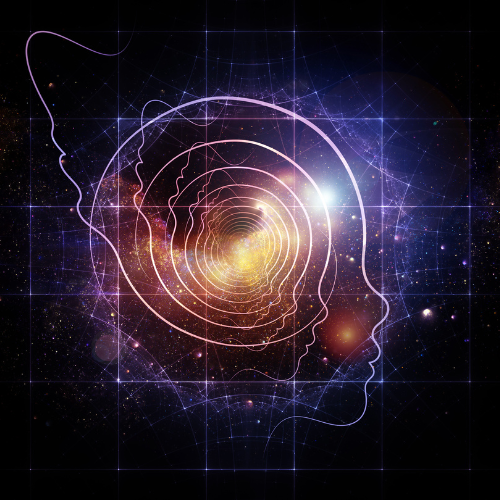Demystifying Emotional Authority in Human Design: A Beginner’s Essential Guide
Emotional Authority in Human Design is a guiding principle that helps you understand how your emotions play a crucial role in making decisions. By grasping this concept, you can make better, more authentic choices that align with your true self.
Whether you're new to Human Design or seeking deeper insights, this article will help you improve your decision-making process by understanding the unique influence of your emotional energy.

What is Human Design?
Human Design is a fascinating system that helps people understand themselves better. At its core, it combines elements from astrology, the I Ching, Kabbalah, and the Chakra system. Created by Ra Uru Hu in 1987, Human Design aims to provide a practical tool for self-discovery. It shows how individuals are wired to make decisions and interact with the world.
Origins of Human Design
Human Design came into the world through a unique experience. Ra Uru Hu, originally named Alan Krakower, had an eight-day encounter with what he described as a “Voice” that guided him to put this system together. This odd yet compelling origin story makes Human Design different from more traditional frameworks.
Key Components of Human Design
Understanding Human Design involves grasping a few key components:
- Type: This is your energy style. There are five main types: Manifestors, Generators, Manifesting Generators, Projectors, and Reflectors. Each has a unique way of interacting with the world and making decisions.
- Strategy: Each Type has a specific strategy. For instance, Generators are advised to “respond,” while Projectors should “wait for the invitation.” Following your strategy can lead to a more fulfilling life.
- Authority: This is about how you make decisions. Emotional authority, a major focus in Human Design, means you should make decisions based on your emotional clarity rather than in-the-moment feelings.
- Centers: These are nine energy hubs in your body graph, akin to chakras. They can be defined or undefined, affecting how you process different energies.
- Profile: This reveals your life's purpose and how you learn. It's represented by two numbers, like 3/5 or 1/4, each with its own meaning.
- Gates and Channels: Gates are specific energies within the Centers, while Channels are connections between Gates. Together, they form your unique energetic blueprint.
Human Design offers a roadmap to understanding yourself and others. It’s like having a manual that explains why you’re wired the way you are. And in the context of Emotional Authority in Human Design, it offers specific guidance on how best to navigate your feelings to make aligned decisions.
Overall, Human Design is a rich, multi-layered system that offers practical advice for better living. Understanding its basics can pave the way for deeper self-awareness and improved relationships.
Defining Emotional Authority
In the practice of Human Design, understanding one's authority is key to making better decisions. “Emotional authority” is one of the most significant types and is rooted deeply in how our emotions influence our choices. But what does emotional authority truly mean in this context? Let's break it down to understand more.
The Emotional Center
The Solar Plexus Center, also known as the Emotional Center, plays a crucial role in emotional authority. This center is responsible for handling our emotions and is a part of the Human Design chart that shows where energy flows through us.

Decision-Making with the Solar Plexus Center
So, how does the Solar Plexus Center guide decisions? Here’s the gist: when you have emotional authority, your emotions become your compass for making choices. Unlike other types of authority, such as sacral or splenic, which focus on gut responses and instincts, emotional authority requires riding an emotional wave.
- Feeling the Wave: Emotional authority moves through highs and lows. It’s not about instant decisions but about waiting out your emotional wave to reach clarity.
- Patience is a Virtue: Decisions made in the heat of a high or low can lead to regret. By waiting, you allow emotions to settle, providing a clearer perspective.
- Trust the Process: This method might seem slower, especially in a fast-paced world, but it leads to more authentic and aligned decisions.
How Emotional Authority Differs From Other Types
Understanding the uniqueness of emotional authority requires comparing it with other authorities within the Human Design system.
- Sacral Authority: Relies on gut instincts and immediate responses. If you have sacral authority, you might feel an instant “yes” or “no.” This is much quicker than emotional authority.
- Splenic Authority: Based on intuition and instant knowing, often referred to as a “whisper” or “quiet voice” guiding you from moment to moment.
- Ego Authority: Driven by desires and willpower, focusing on what's best for you in alignment with your values and heart desires.
In contrast, emotional authority must consider the full spectrum of emotions—from the highest joy to the deepest sorrow. This method ensures that decisions are not reactionary but well thought out.
The Importance of Emotional Authority
Understanding emotional authority in human design is crucial for navigating life effectively. It's the key to making sound decisions by tapping into your emotional intelligence. Let’s explore why emotional authority is so important and how it can impact your life both personally and professionally.
Understanding Feelings and Emotions
Emotions and feelings often get lumped together, but they’re not the same. Emotions are the immediate reactions you have to different situations. They’re triggered by events in your environment. Think of them as the initial splash when you throw a stone into a pond. Feelings, on the other hand, are the ripples that follow. They’re the lasting impressions left after the initial emotional reaction.
Why does this distinction matter? When you understand the difference, you can better manage your emotional authority. By recognizing that emotions are fleeting and feelings have more depth, you gain more control over your reactions. This helps you make decisions that aren't swayed by every emotional wave that comes your way.
Emotional Waves and Decision-Making
People with emotional authority experience emotional waves. These are fluctuations in your emotional state that ebb and flow over time. Think of them like the tides of the ocean: they rise and fall, but are constant and predictable.
Navigating these waves is key to making wise decisions. Here’s how:
- Wait out the wave: Don’t make decisions when you’re at an emotional high or low. Waiting allows you to see the situation more clearly.
- Recognize the pattern: Notice if your emotions follow a pattern. Do certain situations make you feel the same way every time? Understanding this can help you anticipate your emotional reactions.
- Check-in with yourself: Periodically, take a moment to assess your emotional state. This helps you stay grounded and avoid impulsive decisions.
By acknowledging these emotional waves, you give yourself the time and space needed to make balanced decisions. This skill is incredibly beneficial in both personal and professional settings. Whether you’re deciding on a new job offer or navigating a complex relationship, using your emotional authority keeps you steady and sure. Emotions might try to take you on a rollercoaster, but with emotional authority in human design as your guide, you stay in control.
Living in Your Design With Emotional Authority

Practical Tips for Living with Emotional Authority
To navigate life with emotional authority, here are some practical tips:
- Pause Before Deciding: Give yourself time to process feelings. Don’t rush.
- Track Your Emotional Waves: Notice patterns in your emotional highs and lows. Journaling or mood tracking can help.
- Communicate Your Needs: Let those around you know you need time to decide. Encourage patience and understanding from others.
- Meditate and Reflect: Tune into your emotional state through practices like meditation or mindfulness. It helps in gaining deeper insights.
Understanding emotional authority in human design isn't just about recognizing the role of the Solar Plexus Center but also embracing the journey of emotional ups and downs as a powerful guide in making decisions. By aligning with this flow, you can make choices that feel more true to who you are at your core.
Living with emotional authority in human design can feel like you're riding waves of emotions. It's important to find practical ways to manage these feelings and make decisions that truly align with your inner self.
Practicing Emotional Awareness
Developing emotional awareness is the first step to living with emotional authority. Through mindfulness and self-reflection, you can begin to identify your feelings and understand how they impact your decisions.
- Mindfulness Practice: Take a few minutes each day to sit quietly and observe your thoughts and feelings. This helps you become more aware of your emotional patterns.
- Journaling: Write down your emotions each day. Describe the situations that trigger different feelings and analyze your reactions. Over time, you will start noticing trends.
- Check-Ins: Set regular reminders to pause and ask yourself, “How am I feeling right now?” This helps you stay connected with your emotions throughout the day.
By taking these small steps, you can start recognizing your emotional waves and understand how they influence your choices. This self-awareness is essential for people with emotional authority in human design.
Waiting for Clarity
One of the fundamental aspects of emotional authority is the concept of waiting for clarity. Rushing into decisions can lead to feelings of regret or confusion. Instead, wait until your emotions have settled before making important choices.
- Sleep on It: If you need to make a decision, give yourself at least one night to think it over. This allows your emotions to calm down and provides a clearer perspective.
- Talk It Out: Discuss your options with trusted friends or family members. Sharing your thoughts can help you see your situation from different angles.
- Go for a Walk: Physical movement can sometimes help clear your mind. Take a walk, especially in nature, to help soothe your emotions and gain insight.

By waiting for emotional clarity, you give yourself the time needed to make decisions that truly resonate with your emotional authority. This practice can lead to more confident and satisfying outcomes.
By practicing emotional awareness and waiting for clarity, you can navigate emotional authority in human design with more ease. These tools help bring a sense of balance and understanding to the natural ebb and flow of your emotions.
Common Challenges Faced by Individuals with Emotional Authority
People with emotional authority in human design often experience a range of challenges. They can face difficulties in understanding and managing their emotions, which can impact their daily lives and decision-making processes.
Riding the Emotional Wave
Individuals with emotional authority often feel like they are riding a wave of emotions. This can lead to feelings of unpredictability and instability. One moment, they may feel ecstatic, and the next, they could experience deep sadness.
How to Cope
- Acknowledge the Emotional Cycle: Understand that emotions come in waves. Recognizing this can help manage expectations.
- Wait Before Deciding: Delaying decisions until the emotional wave subsides can lead to more balanced choices.
- Journal Emotions: Keeping a log of emotions helps in identifying patterns and understanding triggers.
Difficulty in Making Immediate Decisions
Those with emotional authority often struggle with making quick decisions. The need to process emotions fully can make swift decision-making challenging, leading to stress and second-guessing.
How to Improve
- Sleep on It: Allow yourself time to sleep on decisions, giving your emotions a chance to settle.
- Seek Input: Talk to trusted friends or family members to gain different perspectives.
- Set Deadlines: Giving yourself reasonable deadlines helps in making timely decisions without rushing.
Overwhelmed by External Emotions
Sometimes, individuals with emotional authority can absorb others' emotions, heightening their own emotional state and making it hard to discern which feelings are theirs.
How to Manage
- Establish Boundaries: Setting emotional boundaries with people can help in reducing emotional overload.
- Practice Grounding Techniques: Breathing exercises, meditation, or spending time in nature can help center and ground you.
- Use Visualization: Imagine a protective barrier around you to shield from absorbing external emotions.
Misinterpretation of Feelings
Emotional authority can sometimes lead individuals to misinterpret their feelings or act impulsively based on a temporary emotional state, leading to regret later on.

Strategies to Avoid Misinterpretation
- Pause and Reflect: Take time to reflect on your emotions before acting on them.
- Question Your Feelings: Ask yourself if the emotion is strong enough to warrant action, or if it will pass.
- Mindfulness Practices: Engage in mindfulness to stay present and avoid overreacting to fleeting emotions.
Managing Expectations of Others
People with emotional authority often face pressure from others to make quick decisions or to remain emotionally constant, which is not always possible.
Ways to Manage Expectations
- Communicate Needs: Clearly express your need for time and space to process emotions.
- Educate Close Ones: Help those close to you understand your emotional process and the importance of giving you time.
- Set Realistic Goals: Align your goals with your emotional authority, making them more achievable and less stressful.
Understanding and navigating these challenges can make living with emotional authority in human design more manageable and fulfilling. With the right strategies, individuals can harness their emotional power effectively.
Recognize Your Emotions
Understanding emotional authority in human design is like uncovering a new layer of yourself. It's about recognizing how your emotions guide you through life and how you can use this awareness to make better decisions. By tapping into your emotional authority, you can navigate daily choices with more confidence and ease.
Embrace Your Emotional Authority
To make the most out of emotional authority in human design, openness and patience are key. Embrace your feelings, even if they seem confusing at first. Over time, you'll start to notice patterns and gain insights that you might have missed before. It's normal for emotions to fluctuate; what matters is how you listen to and understand them.
Practical Steps
Here's how you can start practicing emotional authority:
- Pause Before Deciding: Give yourself a moment to breathe and feel what your emotions are saying.
- Journal Your Feelings: Write down your thoughts to identify recurring emotions and patterns.
- Trust Your Gut: Sometimes, your first emotional reaction holds the most truth.
By integrating these steps into your daily routine, you'll become more attuned to your emotional authority and more confident in your choices. So go ahead, start recognizing and trusting your emotional signals. It’s all about finding a balance between logic and emotion, giving yourself the best chance for a fulfilling, authentic life.
Embracing emotional authority in human design can truly redefine how you make decisions, making the process both enriching and enlightening.







